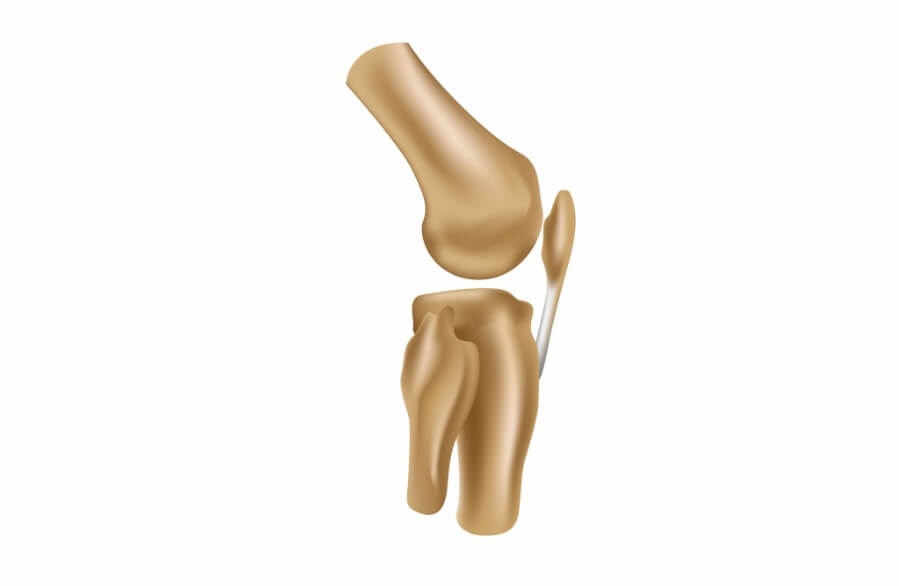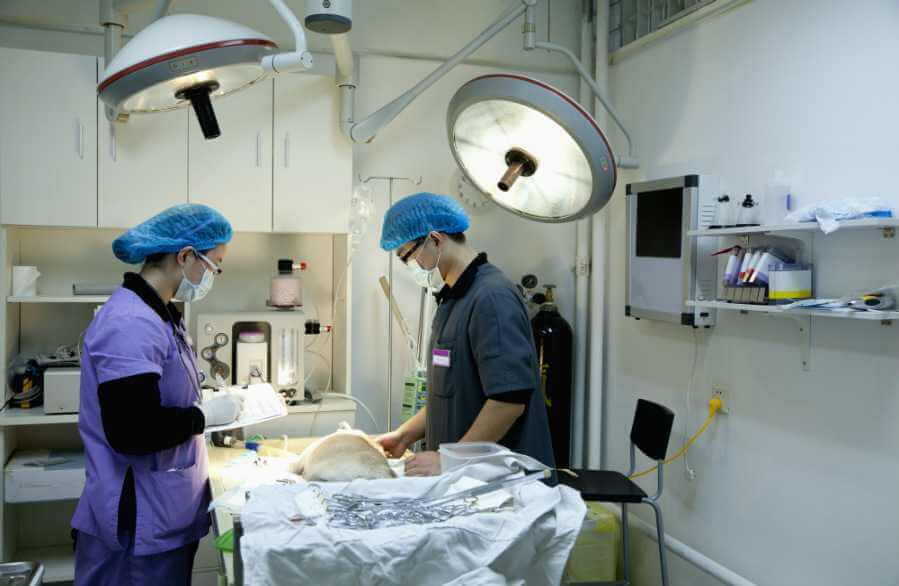There are many reasons why someone would need a hip replacement and arthritis is one of them. Having this kind of pain could lead one to have hip replacement surgery. The disease can permeate joints and this can cause intense pain.
This means that an elderly can be in great pain, which can only be corrected by getting a hip replacement. An elderly person may also break the hip through different ways and may require important surgery. Hip replacement recovery time for elderly can differ from one person to the next.
When one has hip issues, it can be a very painful experience and moving around may be an issue. The only way to deal with it is to get medical help so that it can be treated. Sometimes hip replacement may be the only way to eliminate the pain permanently. Broken pelvis recovery time elderly is different for every person, but that is affected by a variety of things.
What is a hip?
The hip joint is the joint that is between the acetabulum of one’s pelvis and the femur. Usually, its primary function is to handle the body weight as you stand, run, or walk. These are the static and dynamic postures.
The pelvis can be defined as that ring of bones that is in between the hips. It connects to the bones of your legs and the hip joints. Fractured pelvis elderly can affect the muscles, the nerves, and the blood vessels because they usually run through its ring.
If the pelvic bone is broken, it may end up affecting the organs that are situated in the pelvic area and it can take a couple of months before it heals. Surgery may be necessary, but there are cases where it is not necessary.
Hip fracture
Hip fracture in elderly is quite a serious matter and there are some complications that may be life threatening if not handled well in time. One thing you should probably know is that the risks of fracturing the hip area actually rise, as we grow older.
This is because the bones are weakened by age (osteoporosis). Using many medications, balance issues, as well as vision issues make the elderly very likely to fall after tripping. This is a very common cause of a broken hip or hip fracture.
In most cases, you will need surgery to have a hip fracture repaired. The hip can then be repaired or replaced depending on the severity. Physical therapy is also needed before the elderly person can get back to their feet.
So as to avoid such fractures, it is important to try as much as possible to maintain the density of the bones and getting help with rails and walking aids to minimize the occurrence of falls. Acting fast is the best way to handle broken femur elderly.
Hip fracture symptoms
Some things may tell you that a hip has been fractured and they include:
- Inability to handle weight on the leg after your hip is injured
- Great pain within the groin or the hip area
- Being incapable of moving just after a fall
- Your leg may be turned outward, especially on the side of the injured hip
- A shorter leg on that side
- Swelling, bruising, and stiffness in the hip area and around it
The causes
The main cause of fractures is very severe impacts such as a car crash. This is the kind of crash that can cause fractures in everyone regardless of age.
When a person is elderly, they may fracture their hips if they fall from their standing height due to weakened bones. In addition, people who have weak bones may get a fracture if they stand on the left and then twist.
The rate of fractures usually increases with:
- Age: because the muscle mass and bone density tend to decrease significantly, as we age. Also, balance and vision issues increase fall risks.
- Sex: it has been noted that most hip fractures actually occur in women. This is because women tend to lose their bone density at a much higher rate. This is because estrogen levels drop after menopause carefully make the bone loss even faster.
- Chronic conditions: this includes things like an overactive thyroid, which makes the bones fragile. Intestinal disorders can also reduce the amount of calcium and vitamin D absorbed by the body which causes weak bones that can be easily fractured.
- Medical conditions which affect the nervous system and the brain can increase fall risks and therefore fracture risks. This include peripheral neuropathy, stroke, dementia, and Parkinson’s disease
- Some medications: there are medications like cortisone, which cause the bones to be weak, especially when taken for a long time. Others make you dizzy, increasing the possibility of falling. Drugs that affect the CNS are also associated with falls.
Others include:
- Nutritional issues
- Physical inactivity
- Alcohol and tobacco use
Treating hip fractures
Broken femur in the elderly is very common. Treatment usually depends on the location and the severity in the upper femur, also called the thighbone.
The surgeon will also have to consider the tissues and the bones that have been affected. The things that will be considered before treatment is commenced include:
⇒ The pain level when the elderly tries to move
⇒ The overall health of the elderly patient and how well they may be able to tolerate surgery
⇒ Medical history
⇒ The type of fracture or break
⇒ The risks that are associated with such a surgery
⇒ The risks associated with the use of anesthesia on the elderly patient
Types of hip fractures
There are three types of hip fractures that are very common. They include:
- Subtrochanteric fractures- these are the breaks which occur further down the person’s femur or just below the lesser trochanter.
- Intertrochanteric fractures- these are breaks which occur between the lesser trochanter and the greater trochanter.
- Intracapsular fractures- in this case, the break occurs in the neck or below the ball of the femur bone.
Hip replacement symptoms

They may feel an intense or stabbing pain in the joints and it can be hard to stand, move, or walk. Stiffness is also common and the pain can very well radiate to the groin, thigh, buttock, or knee areas.
The causes of this condition are not well known, but overweight individuals have greater risks of needing a hip replacement at some point in their life.
The other factors that can really contribute to the condition include genetic defects as well as injuries in the joint area. One of the ways in which seniors can reduce hip replacement chances is to maintain a healthy lifestyle and manage their weight as much as possible.
If a senior loved one has osteoarthritis, some of the symptoms can include:
- Clicking or crunching sounds as you move
- Tenderness
- Swelling
- Pain
- Stiffness of the joints
- Inability or difficulty doing the day to day activities that need the use of your hip joint
An x-ray is needed to see whether you loved one is losing motion. If they have osteoarthritis, the joint area may be narrowed and it may be necessary to have the procedure done so as to rectify the issue.
The procedure
The replacement procedure has to do with the hip socket and the ball joint which is replaced. Usually, a metal ball is placed within the socket instead to improve the motion range and prevent the bone-to-bone friction that is responsible for the pain.
With such a procedure, the socket can also be contoured to make the range of motion easier using a metal ball joint. This may include the use of a metal shell or plastic line to recreate the area.
The costs
The costs related to hip replacement can be quite significant, especially for seniors, but it is a treatment that is rather necessary because they get back the range of motion they need and that is required to walk easily.
The average hip replacement cost is around 39,300 dollars. In most cases, insurance companies may cover such costs, which help make the financial burden much less. Patients with a cover may only be required to part with 4000 dollars.
Insurance usually covers assessments; the X-rays needed, and even the surgical procedure itself. You may need to part with some more money so as to outfit the home to allow the elderly person to move around with assistance after they have had the surgery.
You may have to install handrails on the stairs or in the bath and the shower as well. These are things that make it much easier for the senior person to actually recover.
You may also have to add them some cushions so as to help them be as comfortable and as assisted as possible as they recover.
Normally, hip replacement surgery recovery is not covered by insurance and so you will have to take care of your loved one once they leave the hospital.
Hip replacement recovery time for the elderly
After undergoing surgery in the hip, seniors are usually very anxious and they want to know whether it actually worked. The main desire at this point is to go back to what they consider normal routine.
The broken hip recovery time for elderly is quite quick and movement can be manageable in just a few days. To be fully recovered, it may take anywhere between one to six months.
When the elderly person has recovered partially, they are able to walk short distances by themselves and get out of their beds. The administration of pain medications is lowered at this time.
During this recovery period, the elderly person starts with assisted walks and then walking on their own for short distances without having to take a break and without feeling pain.
Other things to note
When you start trying to move after you have had the hip surgery, you need to be very careful because if you get an injury or if you fall, then the damage done to the hip area can be very significant.
It is important to stay away from the stairs until the moment that the elderly person has recovered in full. The person also has to use some form of aid as the walk until the doctor tells them it is now safe to walk on their own.
You can get the elderly person a walker, cane, or even crutches to offer them the kind of assistance needed as they walk or as they handle the different household chores.
When the site of the surgery has recuperated, then it is called long-term recovery. The tissues and incisions made usually recover in a matter of six months and then the elderly person is able to get back to the day-to-day activities.
It is important for the incisions to be cleaned every day. During recovery, you should never use creams, lotions, or ointments so as to avoid infections in the area.
Staples used on the area of the incision are usually removed in around 14 days and this allows it to actually heal better. The senior may also experience pain at that site, but it can be managed easily by icing it and keeping it well covered.
The time for recovery can be very little if you take care of your loved one in the best way possible. It is important to follow the directions provided. Before long, an elderly person will be living a normal life and performing the day-to-day tasks as required.
Pain after the surgery

It is important for the elderly person to rest after they have had the surgery. The pain that one gets after the surgery has been completed, usually takes up to 10 days. The elderly person may then be able to get around using a walker in around 4 weeks after they recover.
The pain can also be managed using medication. Painkillers are usually offered after the surgery and it may be necessary for the elderly person to use them up to 12 weeks so as to deal with any pain. Swelling may be unbearable and can be very uncomfortable, especially during evenings.
You can also opt to buy gel packs to help with icing and to keep swelling in check. Using such methods together with medication makes things even better for the senior.
Broken hip elderly survival rate
For many people, the only way to treat a broken hip is through surgery. If a person is not eligible for the procedure because of medical conditions, then traction is the available option. The duration of time that an elderly person can be in traction usually depends on the severity of the fracture.
For elderly people, life expectancy is quite good. However, a broken hip can increase dying changes, especially for persons over 65 years. Around four patients out of five survive broken hips but the mortality rate doubles after a decade or so in people who suffer from fractures.
As with other medical conditions, you should get timely attention. An elderly person should get a prognosis as soon as a problem is detected. In addition, there is a need to stay alert for any complications that may arise once the surgery has been completed and the person is in recovery. You can still lead a normal life after hip surgery in elderly.
Other non-surgical instances
The other instance where surgery may not be required is if the ends of the bone that has been impacted by the break have been pushed together very firmly by that fall. In such a case, it is possible for your bone to heal in a natural way.
The elderly person can be given painkillers, physical therapy, and bed rest to allow healing. In addition, you may not be subjected to surgery if you had other medical conditions previously where you were incapacitated from walking.
Conclusion
Hip fractures and breaks can be very frustrating for an elderly person, especially because they may be dealing with other things already. You can try to prevent such occurrences. You should make the home of an elderly person as safe as possible. This can include adding handrails and grips in all the important parts of the home like the bathroom, the bedroom, and stairs.
If you are having difficulty with mobility and vision, using a walking aid can be helpful. If it is possible, let the elderly person stay away from the stairs and keep the home dry to avoid slips and falls. Get help for your elderly loved one when you feel there is an issue with the hip area.

